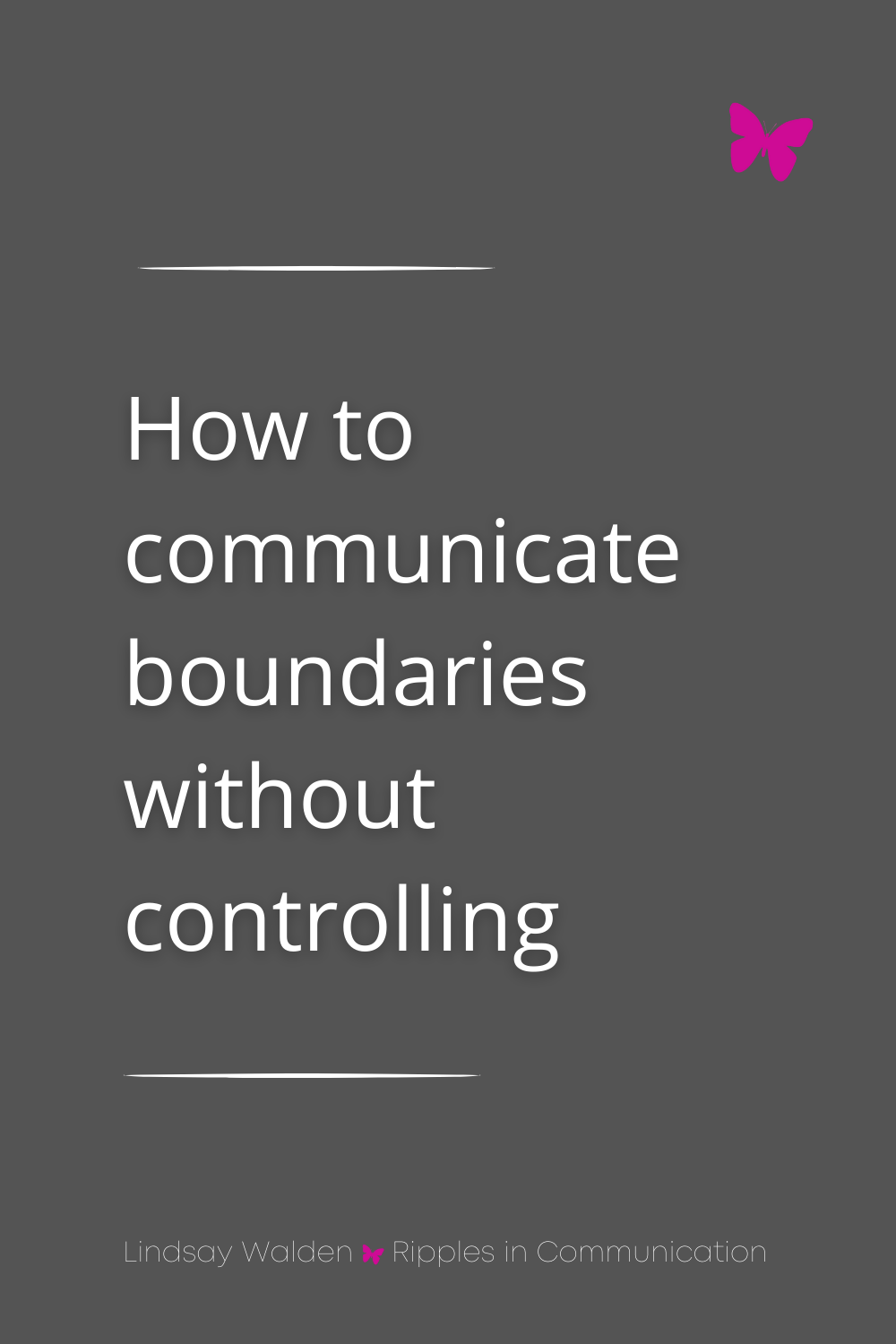Boundary or Control? Navigating Misunderstandings in Love
In our journey through relationships, we often encounter moments that test our understanding and respect for each other's boundaries. It's not uncommon to face questions like, "What is a good response when my partner says my boundaries are an effort to control them?" This blog post aims to unravel this delicate topic, offering insights and practical steps to foster a thriving and intimate relationship built on mutual respect and understanding.
Have you gotten my FREE Relationship Communication Guide yet? Start building an authentic, conscious, and thriving relationship with your partner TODAY. Say goodbye to misunderstandings, conflicts, and missed opportunities for a deeper connection. These are the same tips and practical advice I give to my clients every day. With this guide, you'll be equipped to navigate any communication challenge and build a strong and fulfilling bond with your partner. Click the button below to enter your email address and I will send the guide to your inbox right away!
Discover the art of expressing your needs without exerting control. Learn key strategies for healthy boundary setting in relationships.
The Essence of Boundaries
I feel it's essential to start by clarifying a common misconception: boundaries are not a form of control. Rather, setting boundaries is about teaching others how to treat us based on the standards we set for ourselves. It's a declaration of what is and isn't acceptable to us. Remember, you have the right to live your life in a way that suits you, but you don't have the right to impose your standards on someone else.
The Thin Line Between Boundaries and Control
It's crucial to differentiate between setting boundaries and exerting control. Control creeps in when you try to force your partner to change their behavior to align with your preferences. If you find yourself stifling your partner's individuality or voice, it's time to reassess – this is where control begins. Understanding this distinction is key to maintaining a healthy relationship dynamic.
5 Steps to Building a Same Team Mentality
In a relationship, being on the same team means that both partners have an equal say and voice in decisions. When conflicts arise, it's an opportunity to employ emotional neutrality and relationship empathy.
Step 1: Emotional Neutrality
The emotional neutrality concept involves stepping back from the heat of the moment and avoiding reactionary responses. If your discussions often turn into arguments, it's a sign to adopt a more emotionally neutral approach. This requires active listening and reciprocal conversation, especially when discussing sensitive topics like boundaries.
Step 2: Relationship Empathy
Empathy in a relationship means creating space for both partners to express their emotions freely, with the understanding that the relationship can withstand this honesty. By combining emotional neutrality with empathy, you can establish a strong foundation for communication.
Step 3: Active Listening and Understanding
When discussing boundaries, it's vital to engage in active listening. Are you truly understanding your partner's perspective, or are you simply waiting for your turn to speak? This self-awareness is crucial for honest and effective communication.
Step 4: Honest and Courageous Reflection
Reflect honestly on your relationship dynamics. It's always possible to make improvements, but it starts with addressing the critical issues. Boundaries are one such critical aspect.
Step 5: Continuing the Dialogue
If you're struggling to make your partner understand your boundaries, don't lose hope. It often takes multiple conversations to fully convey and understand each other's perspectives. If necessary, consider seeking the guidance of a therapist to facilitate these discussions.
Conclusion
In conclusion, understanding and respecting boundaries is not about controlling your partner but about fostering a relationship built on mutual respect and empathy. By embracing emotional neutrality, active listening, and continued dialogue, you can navigate through these challenges and build a stronger, more intimate connection with your partner. Remember, in a relationship, you're a team, and every team thrives on clear communication and mutual understanding.
Strengthen your ability to communicate and uphold boundaries with these empowering daily affirmations. Perfect for anyone looking to enhance mutual understanding and respect in their relationship.







